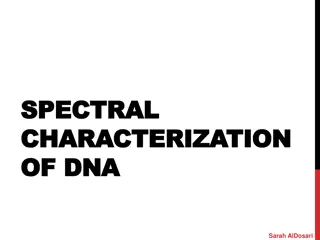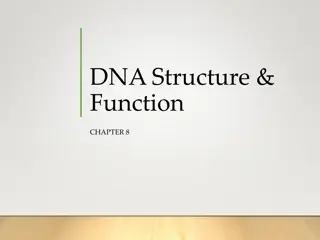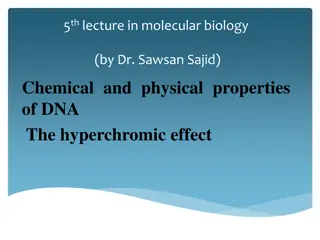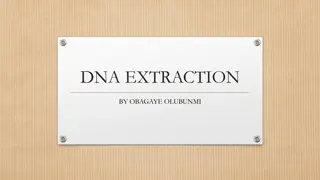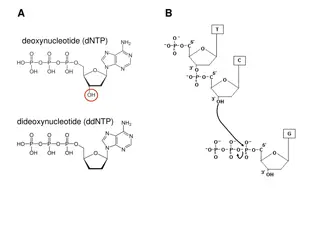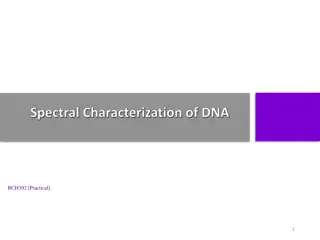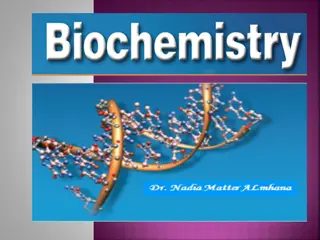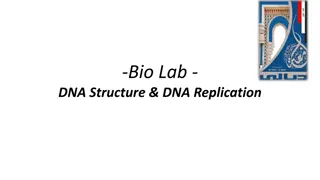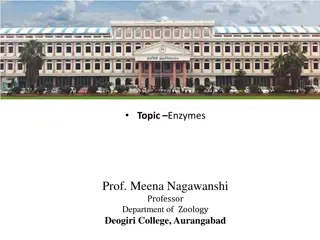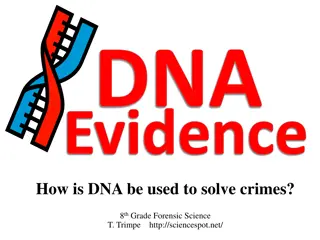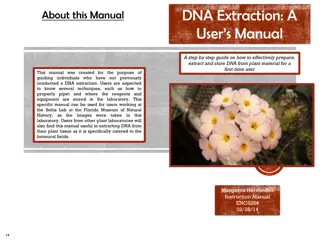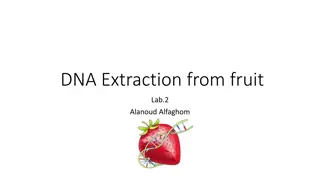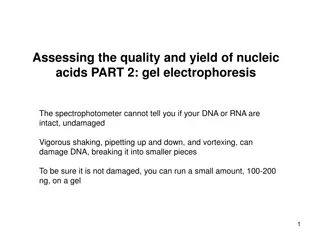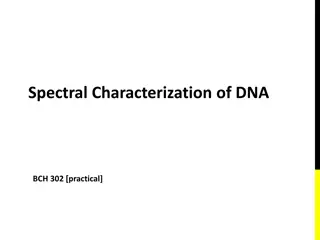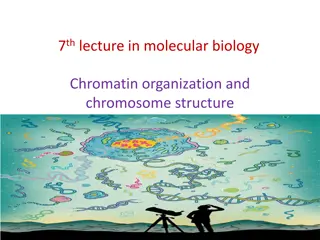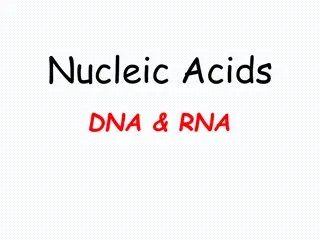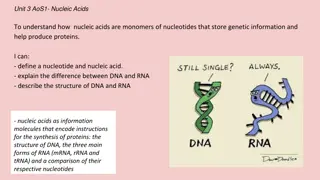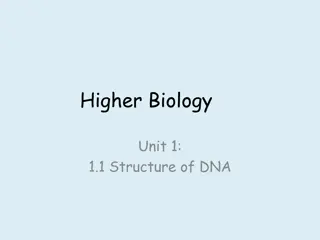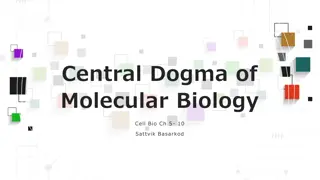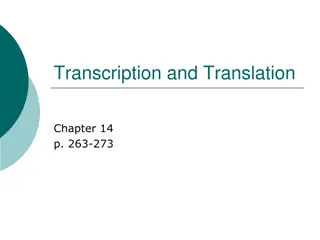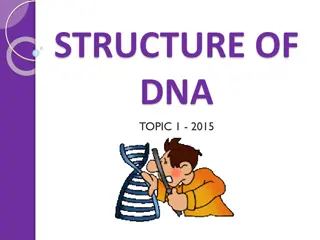Unveiling the Molecular Structure of DNA
The molecular structure of DNA, a double-stranded helical molecule, holds the genetic information in living organisms. Comprised of nucleotides with deoxyribose sugar, phosphate groups, and nitrogenous bases, DNA forms a ladder-like structure. Base pairing, governed by Watson-Crick rules, leads to the iconic double helix shape. The strands run antiparallel, with each strand having distinct 5' and 3' ends. This intricate arrangement of nucleotides serves as the blueprint of life.
Download Presentation

Please find below an Image/Link to download the presentation.
The content on the website is provided AS IS for your information and personal use only. It may not be sold, licensed, or shared on other websites without obtaining consent from the author. Download presentation by click this link. If you encounter any issues during the download, it is possible that the publisher has removed the file from their server.
E N D
Presentation Transcript
DNA Molecular Structure by Suvasree Sahu
Introduction The molecular structure of DNA (deoxyribonucleic acid) is a double-stranded, helical, and ladder-like molecule that carries the genetic information in living organisms. DNA consists of repeating units called nucleotides, and each nucleotide is composed of three main components: a sugar molecule (deoxyribose), a phosphate group, and a nitrogenous base.
The Components of DNA Nucleotide: 1.Deoxyribose Sugar: This is a five-carbon sugar molecule that forms the backbone of the DNA strand. Each deoxyribose sugar is connected to a phosphate group at its 5' carbon and to a nitrogenous base at its 1' carbon. 2.Phosphate Group: The phosphate group is a chemical group composed of one phosphorus atom and four oxygen atoms. It connects the deoxyribose sugars of adjacent nucleotides in the DNA strand through phosphodiester bonds. 3.Nitrogenous Base: There are four types of nitrogenous bases found in DNA: Purine- Adenine (A), Guanine (G) & Pyrimidine- Thymine (T) , Cytosine (C)
Base Pairing of Double Helix The two strands of DNA are held together by hydrogen bonds between complementary nitrogenous bases. Adenine (A) always pairs with thymine (T), forming two hydrogen bonds, while guanine (G) always pairs with cytosine (C), forming three hydrogen bonds. This specific base pairing is known as the Watson-Crick base pairing rule. As a result of this base pairing, DNA forms a double helix structure, resembling a twisted ladder. The two strands run in opposite directions, with the 5' end of one strand aligned with the 3' end of the other. The sugar-phosphate backbone forms the sides of the ladder, and the paired nitrogenous bases form the rungs.
Anti-Parallel Orientation The two strands of the DNA double helix are antiparallel, meaning they run in opposite directions. One strand has a 5' end, where the fifth carbon of the sugar is not linked to another nucleotide, and a 3' end, where the third carbon of the sugar is not linked. The other strand has a complementary 3' end at the top and a 5' end at the bottom.
Overall Structure The molecular structure of DNA is a beautiful and intricate arrangement of nucleotides, forming the blueprint of life. It serves as the hereditary material, carrying and passing on genetic information from one generation to the next, and directing the synthesis of proteins that determine an organism's traits and functions




